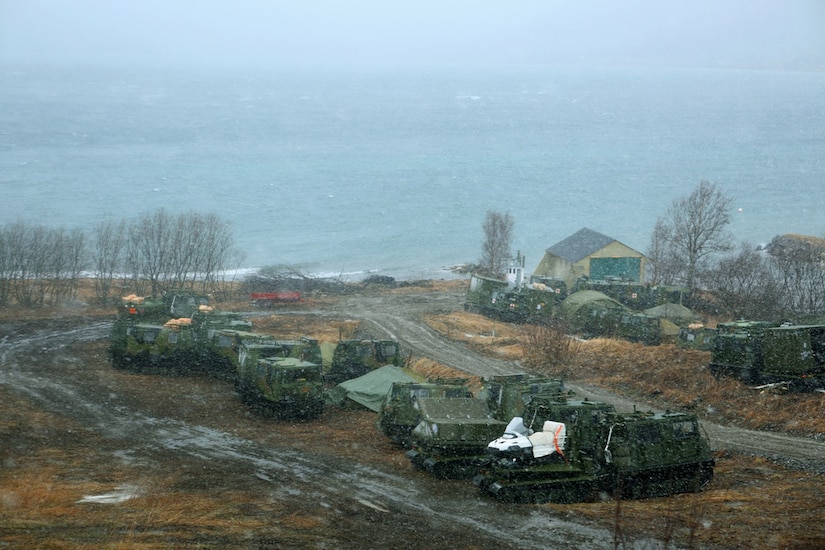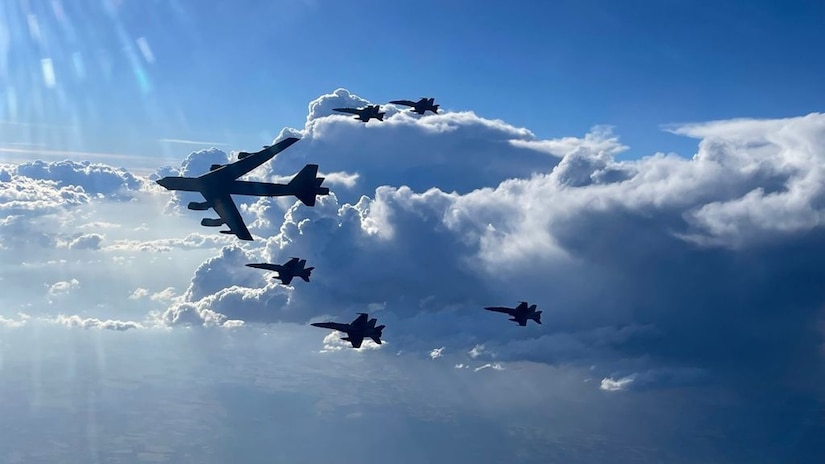Sept. 28, 2021 | , DOD News
In a speech earlier this year, Secretary of Defense Lloyd J. Austin III called deterrence the cornerstone of defense to make sure U.S. adversaries know that the risk of aggression is out of line with any conceivable benefit, a key Defense Department official said today.
Gregory M. Kausner, performing the duties of undersecretary of defense for acquisition and sustainment, was the keynote speaker at the Common Defense 2021 expo this morning.

"In describing a new vision of 'integrated deterrence,' he [Austin] said that while it still rests on the same logic, it now spans multiple realms," Kausner said. "The right mix of technology, operational concepts and capabilities — all woven together and networked in a way that is credible, flexible and so formidable that it will give any adversary pause."
That approach is multi-domain, spans numerous geographic areas of responsibility, is united with allies and partners, and is fortified by all instruments of national power, he said.
"For those of us in the acquisition and sustainment enterprise, the concept of integrated deterrence is a call to action," Kausner said.
DOD must continue to evolve its policies, processes — and, most importantly, its culture — to ensure the United States and its network of allies and partners remain predominant across the 21st century battlespace, he said.
The purpose in DOD's acquisition and sustainment is to enable the delivery and sustainment of secure, resilient and preeminent capabilities to the warfighter and international partners, Kausner emphasized.
As defense acquisition has evolved, the geopolitical landscape of today calls for an integrated suite of capabilities to field a lethal, resilient and rapidly adapting joint force, he said.
"Developing such capabilities should be guided by mission engineering — a means to achieve desired warfighting effects through scoped requirements, guided development, and informed investment — to directly link programs with the missions they must accomplish," he explained.

"Put simply, the mission architecture is the business model for the conduct of operations," he noted. Kausner also added that, as overarching mission architecture is illuminated, DOD is able to identify critical mission threads and the necessary end-to-end tasks.
Kausner said the acquisition enterprise must center the force of its considerable resources, ingenuity and expertise on the critical linkages that enable warfighters to complete the kill chain.
In recent years, DOD began that process with a comprehensive redesign of its acquisition policies. The result was the adaptive acquisition framework -- one of the most transformational changes to defense acquisition in years, he said.
With six distinct pathways, Kausner said the framework empowers program teams to tailor their approaches to a specific capability, making DOD more agile and more disciplined in addressing acquisition challenges at the program level.
Kausner said that to ensure a ready workforce, DOD is putting in place a comprehensive talent management framework focused on streamlining certification requirements, expanding job-relevant credentialing opportunities, and providing a continuous learning model. It's also adopting best-practices to optimize our performance.
Kausner said that DOD is also evolving into a data-centric enterprise, one that uses data at speed and scale for operational advantage and increased efficiency.
And while DOD is just scratching the surface, there's an imperative to advance defense acquisition at the enterprise level, he said. A holistic approach to enterprise acquisition is necessary — one that integrates policies and processes at the micro level, but also aligns other key aspects of defense acquisition at the macro level, he explained.

Kausner said that to identify and address interdependencies and critical risks, DOD must broaden its assessments to include a portfolio of systems. The department is adopting integrated acquisition portfolio reviews to strengthen synchronization of warfighting concepts, requirements, technologies and program execution.
"We are in the midst of a rebalance from a program-centric approach to a portfolio-based perspective," he said. "For example, instead of looking only at a specific munition, we're more focused on how that system fits into the broader integrated air and missile defense capability portfolio," he explained.
Such an outlook enables DOD to not only see all the dots, but to connect them to directly align decision making with operational needs, Kausner said.
"We can expect adversaries to challenge our logistics dominance from the homeland to the outer reaches of the battlespace," he said, adding that cross-cutting portfolio reviews will highlight the impact of contested logistics by evaluating material shortages, munitions levels and fuel supply chains across a range of systems.
"Climate change will also continue to alter our operational environment," he said. "Going forward, portfolio reviews will assess the efficacy of both our emerging programs and our supporting infrastructure in the face of shifting environments."
Adopting a portfolio perspective will also enable a healthy, vibrant, and — most importantly — a viable defense industrial base now and into the future, Kausner said.








No comments:
Post a Comment